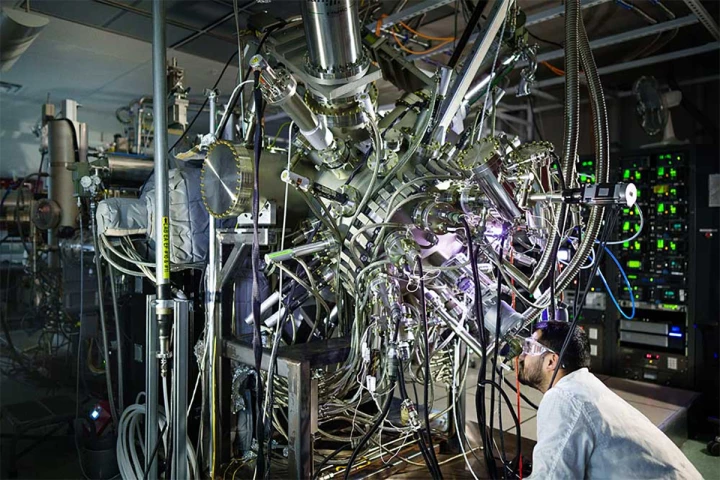Photonics
-
Under specific conditions, lasers can cool things down – and that might just be what we need to tackle way-too-toasty data centers. A new technology called laser-based photonic cooling can target tiny hotspots on chips to zap heat away.
-
Forget LEDs, researchers from the University of Michigan have developed a new type of incandescent light bulb. The device is capable of emitting elliptically polarized light, described as "twisted" light.
-
IBM has come up with a way to make training and running generative AI models five times faster and much more energy efficient by swapping out copper wires for beams of light to connect data center components.
-
The first direct visualization of the shape of a photon has been created. These particles of light are impossible to photograph, but UK physicists have now calculated their wave function to produce an accurate image of a photon as it’s emitted.
-
Researchers have created a device that uses photonic radar to remotely and accurately monitor breathing, even distinguishing between more than one patient. The device might one day be used in hospitals, aged care facilities, prisons, and at home.
-
Move over, macro: researchers have created the world’s smallest silicon LED and holographic microscope, and among its uses is a hack that'll let you use your smartphone to view objects as tiny as a single human skin cell in brilliant high resolution.
-
The speed record for data transmission using a single light source and optical chip has been shattered. Engineers have transmitted data at a blistering rate of 1.84 petabits per second (Pbit/s), almost twice the global internet traffic per second.
-
A powerful new optical chip can process almost two billion images per second. The device is made up of a neural network that processes information as light without needing components that slow down traditional computer chips, like memory.
-
A new type of radar can measure objects down to centimeters. The new technique uses a photonic system to generate much higher bandwidth signals, enabling radar that can detect smaller objects, and even monitor patient vital signs in hospitals.
-
Quantum computers are so far held back by their complexity. Engineers at Stanford have now demonstrated a new relatively simple design for a quantum computer where a single atom is entangled with a series of photons to process and store information.
-
Engineers at Stanford have created a new optical device that can easily manipulate light into basically any color desired. The system uses a series of modulators to fine-tune the frequencies of individual photons to change their color.
-
Engineers have developed a simple way to make colloidal diamonds that self-assemble. These structures have traditionally been tricky to manufacture in bulk, but with this new method they could be used to help make better photonic devices.
Load More











